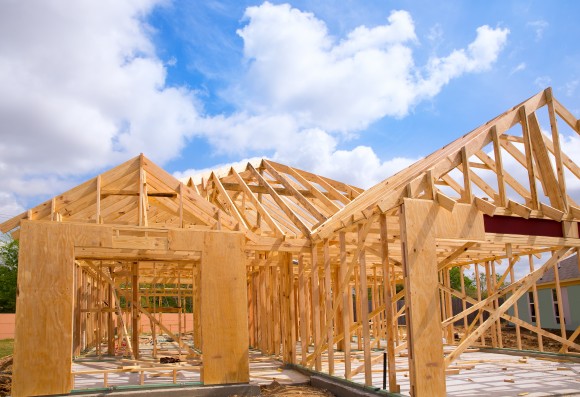If Hurricane Ian would have made landfall in Florida, say, six months ago, the costs of reconstruction could have been even higher than the already staggering estimates now coming from the Sunshine State.
Inflation is indeed set to bump up rebuilding price tags. But one insurance expert told Insurance Journal how a softening in the new home construction market has contributed to the unkinking of supply chains and reductions in the prices of many types of building materials.
“Inflation will exacerbate repair and rebuilding costs from Ian above and beyond the effect we would ordinarily see from demand surge,” said Bob Hartwig, an industry veteran who currently works as a professor of finance at the University of South Carolina’s Darla Moore School of Business and serves as director of the school’s Center for Risk and Uncertainty Management.
“There is a small silver lining in this, in that as it turns out, because the Federal Reserve has been raising interest rates for the past several months, this has cooled the housing market, and it’s been cooling the new home market,” he added. “The headline rate of inflation, which is about 8.5 percent today, is somewhat lower for building materials.”
An Oct. 14 blog post from the National Association of Home Builders (NAHB) shared that the prices of building materials decreased 0.3 percent in September (not seasonally adjusted) according to the latest Producer Price Index report. The post also shared that PPI for goods inputs to residential construction, including energy, declined for the third consecutive month in September (-0.1 percent).
“Prices have fallen 2.3 percent since June, the largest three-month drop since April 2020,” reported NAHB. “However, these modest price declines have occurred when material prices were already at extremely elevated rates.”
Stonybrook Capital, a strategic advisory and investment banking firm, recently reported that Hurricane Ian will result in the largest-ever insured loss event in nominal dollars at an estimated price tag of more than $75 billion. Catastrophe modeler RMS said a “sizable portion” of losses from the hurricane will be from “post-event loss amplification and inflationary trends” when it released a best estimate of $67 billion in insured losses from Ian. Modeler Karen Clark & Co. similarly worked in these factors when coming up with an insured loss estimate for Ian of $63 billion.
Temporary surges in inflation aren’t unusual following natural disasters that leave a large footprint of destruction. Demand surges commonly follow catastrophes like Ian, and they often drive up the prices of basic commodities related to homebuilding and construction — such as plywood, lumber, concrete and other materials.
Those costs are built into insurance policy rates. What isn’t factored in, however, is the country’s accelerated national underlying annual inflationary trend, which was most recently reported north of 8 percent in September. This underlying inflation is “definitely a problem,” Hartwig said, “but less of a problem than it would have been six months or a year ago, and that’s because of the cooling of new home construction, which is leading to greater availability for building materials and even labor.”
On the provider end, he explained that insurers will look to build that inflationary trend into 2023 rates and beyond. When this happens, Hartwig estimated hundreds of thousands of Floridians will experience dramatic increases in premiums. Others may be dropped from their providers entirely.
“Double-digit percent increases in virtually every case,” he said. “And many others are going to find that their insurer is potentially going to non-renew them. Others are going to be in a situation where their insurer went under, and so they will be seeking coverage elsewhere.”
The road to rebuilding could be a long one. With inflation at a four-decade high and labor and materials still high in demand, CoreLogic, a data and analytics services provider, anticipates recovery will be slow and difficult.
Still, while labor markets — including construction — are tight, they aren’t quite as tight as they would have been back in April or last fall. Typically, following an event like Ian, many contractors will descend on the impacted area simply because much work is needed, Hartwig said.
*This article was originally published by Insurance Journal, CM’s sister publication.





















 Unpacking a Consumer Intervenor’s Novel Idea
Unpacking a Consumer Intervenor’s Novel Idea  Viewpoint: Mapping Evolving Regulatory Terrain for MGAs, MGUs and Other DUAEs
Viewpoint: Mapping Evolving Regulatory Terrain for MGAs, MGUs and Other DUAEs  What to Expect in 2026: U.S. P/C Results More Like 2024
What to Expect in 2026: U.S. P/C Results More Like 2024  The Hardest Part of Innovation in Insurance Isn’t Technology; It’s Culture
The Hardest Part of Innovation in Insurance Isn’t Technology; It’s Culture 




